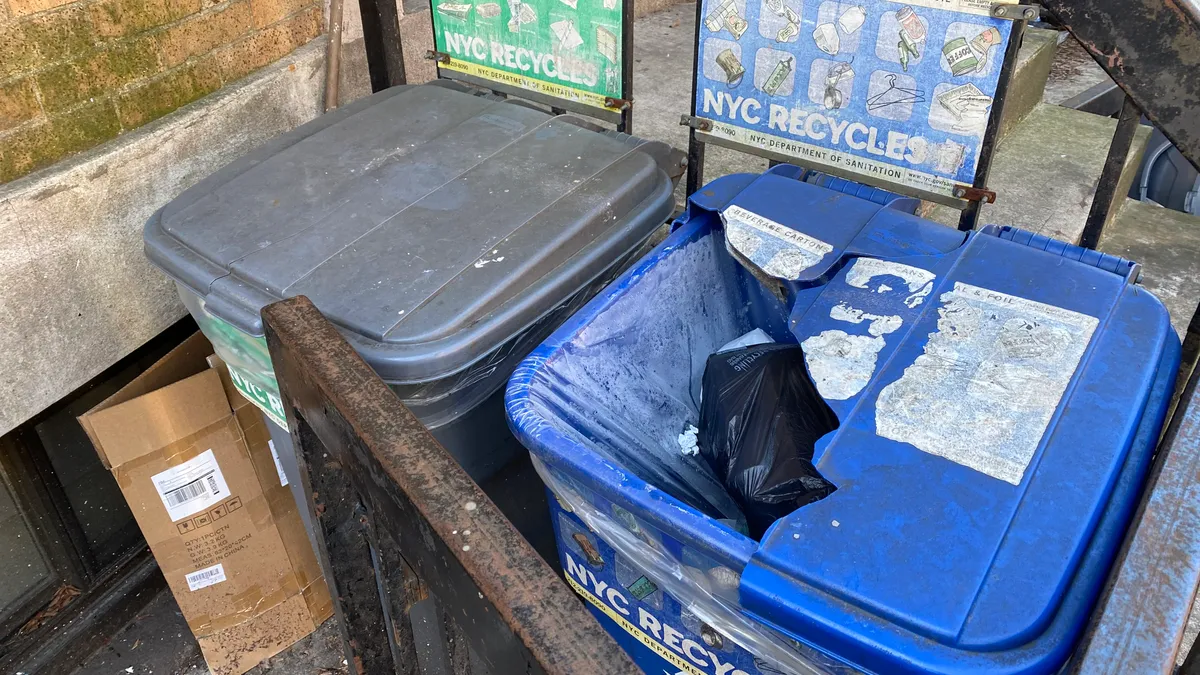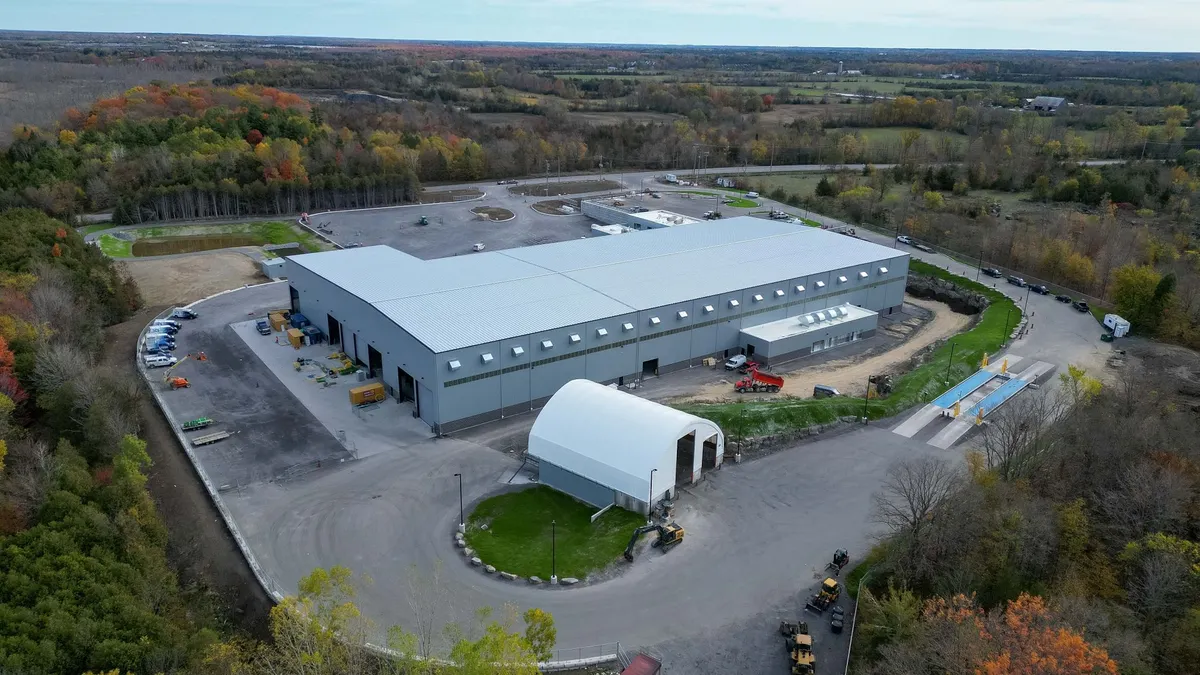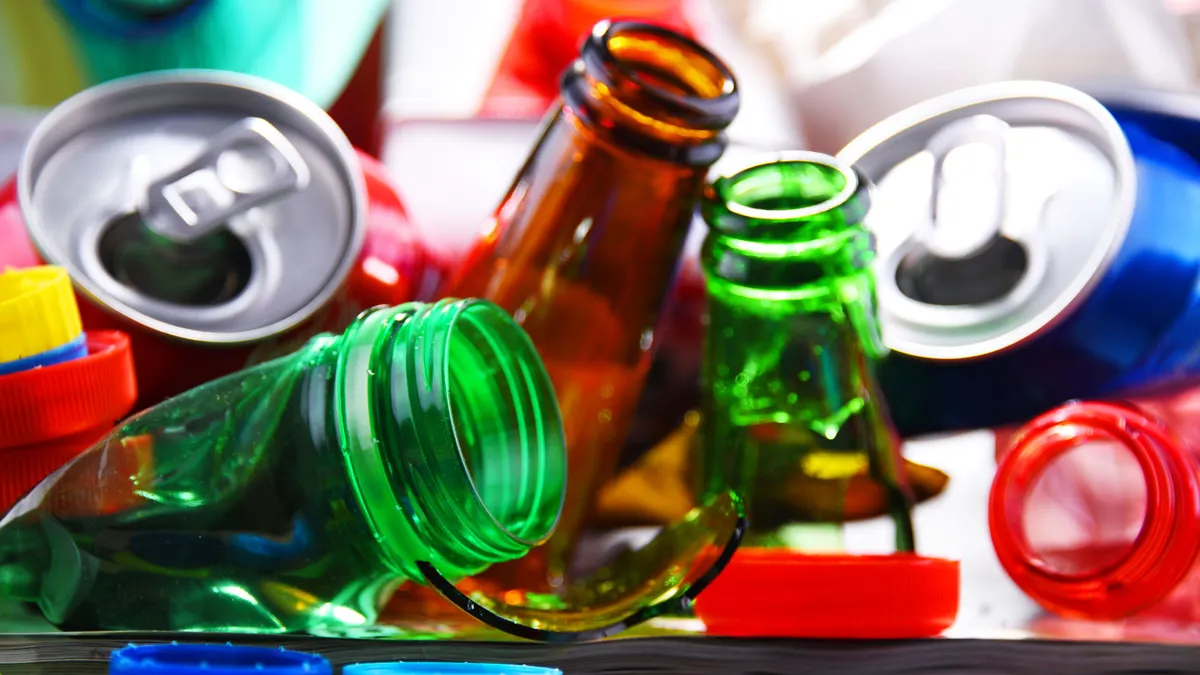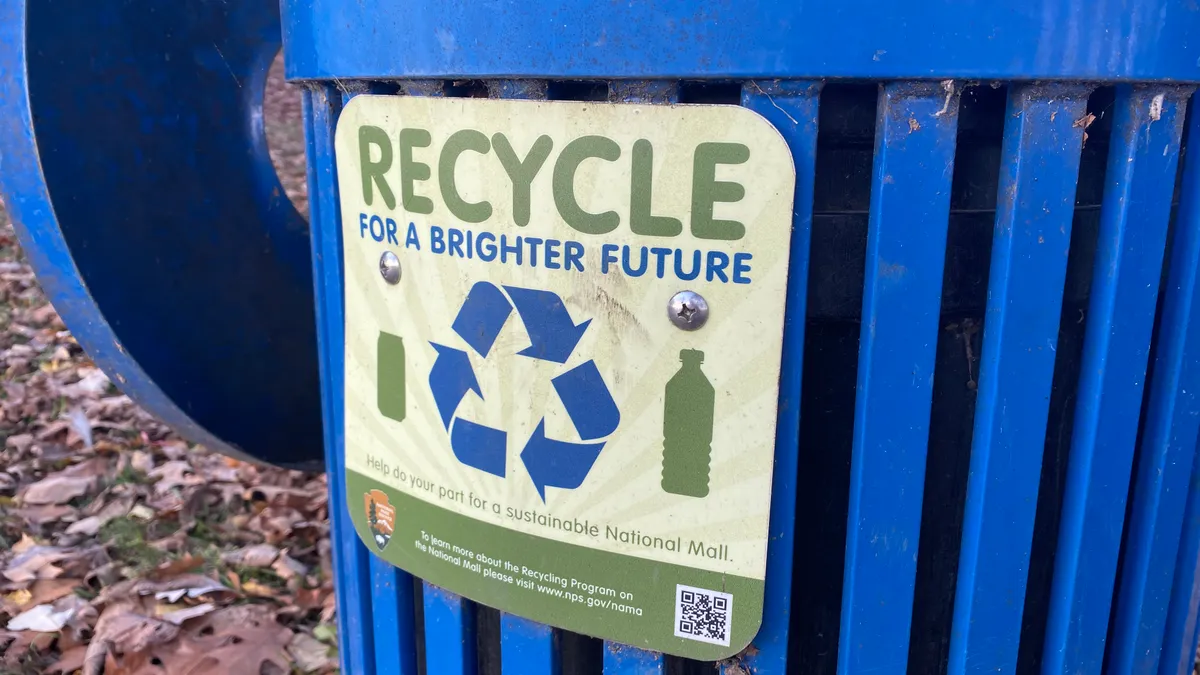The New York City Department of Sanitation captured less residential and institutional recycling than it did six years ago and encountered more contamination in recycling streams in 2023, according to its newly released waste characterization study.
While the agency attributed some of the shrink in recycling tonnages to shifting trends, like packaging lightweighting and the decline of newspapers, experts say the agency is falling behind on its duty to educate residents and residential building staff members who manage trash, recyclables and organics for buildings of all sizes.
“Just mandating a recycling program does not make it successful,” Eric Goldstein, New York City environmental director with the Natural Resources Defense Council, said. “It needs additional focus from the department, including a reinvigorated education and training effort.”
In response to a question about the role education should play in improving contamination and capture rates for recycling, DSNY Press Secretary Vincent Gragnani highlighted the “massive, multi-pronged education and outreach” campaign the agency did around curbside organics collection.
“We remind New York City residents and businesses that we are all required to give recyclable materials a second life by separating them from regular trash,” Gragnani wrote in an email.
The study is the first that DSNY has conducted since 2017. Auditors collected and analyzed material from each residential collection stream: paper and cardboard recycling; metals, glass and plastics recycling; and trash. They found that on the whole, New Yorkers discarded fewer pounds of refuse than during any prior study year, despite the pandemic shifting some waste tonnage from commercial streams to residents’ homes.
Recycling and refuse collections in New York City
The study found additional bright spots. The statewide bag ban that took effect in 2020 contributed to a 68% reduction by weight of plastic bags in the waste stream since 2017, a reduction that appears to have more than offset the increased amount of other types of bags that have since found their way into the garbage. A ban on expanded polystyrene foam containers, mostly used for takeout, contributed to that material decreasing 54% by weight in the waste stream. In a note leading the study, DSNY Commissioner Jessica Tisch said the effectiveness of the bans lends “credence to the fight to enact extended producer responsibility at the state level.”
But New York is going backwards in its diversion goals, according to the study. It found that even though 75% of materials in the waste stream can be diverted from disposal, just 20.2% of the waste stream was diverted in 2023. That metric includes a decline in the capture rate of paper and cardboard, which dropped 2.5 percentage points, and a decline in the capture rate of metals, glass and plastics, which dropped 2.6 percentage points. A goal set in 2018 to grow the city’s capture rate from 50% to 60% has spawned little improvement, and the city’s goal to stop sending waste to landfills by 2030 seems more and more out of reach.
Clare Miflin, founder of the Center for Zero Waste Design, has worked with DSNY to educate architects on best practices for materials diversion and other initiatives. She said she was troubled by a DSNY official characterizing the changes reflected in the study as “negligible” and by the agency’s head, Jessica Tisch, recently waving away the notion that DSNY should encourage residents to reduce the amount of garbage they produce.
“There’s just this hole,” Miflin said. “DSNY doesn't think they’re responsible for getting to zero waste.”
Organics
This year’s waste characterization study is the fourth since 2000, and it’s the first time a study has logged a decline in recycling rates. Samantha MacBride, assistant professor at Baruch College and a former DSNY official, had a hand in a major waste characterization study the city released in 2005 as well as subsequent studies. She said DSNY has made some improvements since her tenure there ended.
“Sanitation is better now than they used to be,” MacBride said. “When I worked at Sanitation, if a resident asked us, ‘Where does our stuff go?’ We would give them a vague, general answer about it, but most of our staff did not even know exactly where it was going.”

The new study also takes a close look at organics collection. Efforts to offer curbside collection expanded haltingly before the pandemic. But the Adams administration, backed by the city council, began a more permanent expansion last year.
Today, DSNY is largely sending source-separated organics to either the newly expanded Staten Island Composting Facility or a codigestion facility at the Newtown Creek wastewater treatment plant in Brooklyn. Those facilities have been touted by the agency as a success, as has the rollout of organics curbside collection in Queens and Brooklyn.
The waste characterization study notes these programs offer additional opportunities for diversion. The study estimated that an additional 36% of organics currently in the waste stream could be diverted for collection after Manhattan, Staten Island and the Bronx get curbside organics collection later this year.
But in a study of organics diversion in Queens during the 10 months the borough had curbside collection last year, MacBride found that a troublingly low 4% of organics were captured. Boosting that rate would require a series of measures, MacBride argued in a policy brief, including an embrace of microhauling, community compost and greater transparency. Such efforts would combat skepticism and lack of participation in organics collection.
“People always want to know, where does my trash go, where does my recycling go, where does my composting go? And when you can’t give a lot of answers, it’s no surprise that people start believing conspiracy theories,” MacBride said. “It’s transparency … people have a right to know about the world they live in.”
Education
Issues with both recycling and organics collection have ebbed and flowed for decades, since DSNY first began separating out materials from the refuse stream. But they’re compounded today by budget cuts that have hamstrung the agency’s education and outreach efforts.
Miflin noted that November budget cuts made by Adams have halted a program run by GrowNYC in partnership with New York City schools to teach students sustainable practices, just as schools are beginning to receive organics collection service. The nonprofit itself now faces dire financial straits, as the elimination of funding for the community composting program could result in dozens of layoffs.
The November cuts also slashed $4.1 million in outreach and communications spending budgeted for fiscal year 2024, with additional multimillion-dollar cuts planned for subsequent budgets. Those cuts reduce the agency’s ability to message on critical programs, but repeated and sustained messaging campaigns on proper recycling are critical in a city that saw more than 2.5 million new residents arrive between 2010 and 2020, Goldstein said.
“The city has not been paying attention to the need to repeat and reinforce the message about how to recycle and why it’s important,” he said.
More education and outreach money should be spent on programs that embrace a zero waste mindset, Miflin said. While some opportunities like the Clean Buildings Training remain for staff, Miflin said the new administration did not renew a contract she had to educate architects on how to design buildings for zero waste. She noted that without planning ahead for diversion, designers of large buildings frequently don’t provide enough space for recycling and organic waste, instead furnishing just five square feet for recycling storage or a separate chute as mandated by code. Miflin said current codes and DSNY’s collection systems are incentivizing trash.
“A building like that, of course they're gonna get contamination,” Miflin said.
The city could make progress by earning back residents’ trust and buy-in with recycling programs, Goldstein said. But reducing the amount of waste sent for disposal could also save the city money, he pointed out — New York City currently spends nearly $500 million on waste disposal and export.
“That’s not chicken feed, and it’s coming from our taxpayers,” Goldstein said. “The economic benefits of recycling and composting when they are fully embraced and comprehensively publicized could be significant for taxpayers as well as for the environment.”
Editor’s note: This story has been updated with additional information about building code recycling requirements.
This story first appeared in the Waste Dive: Recycling newsletter. Sign up for the weekly emails here.



















